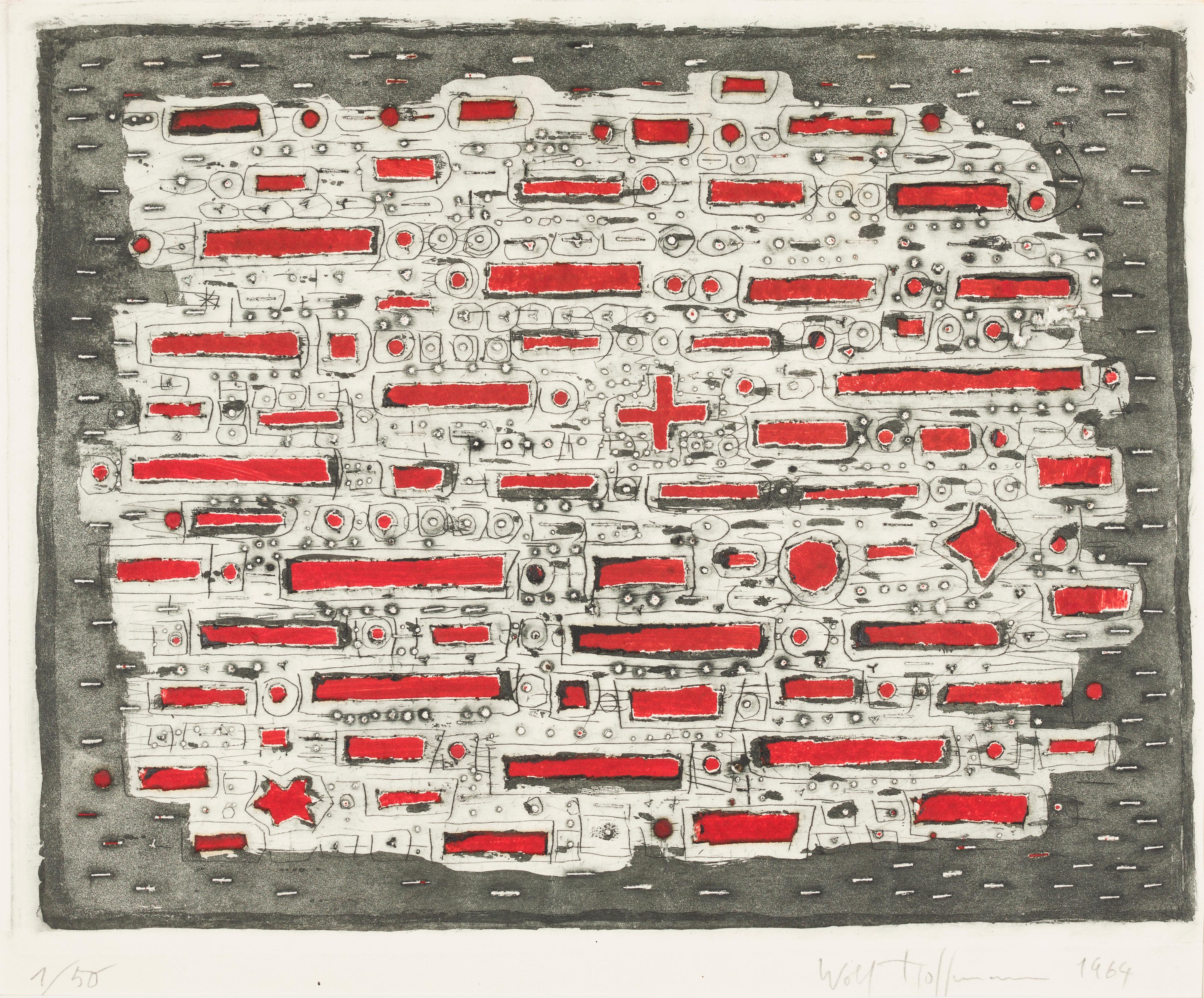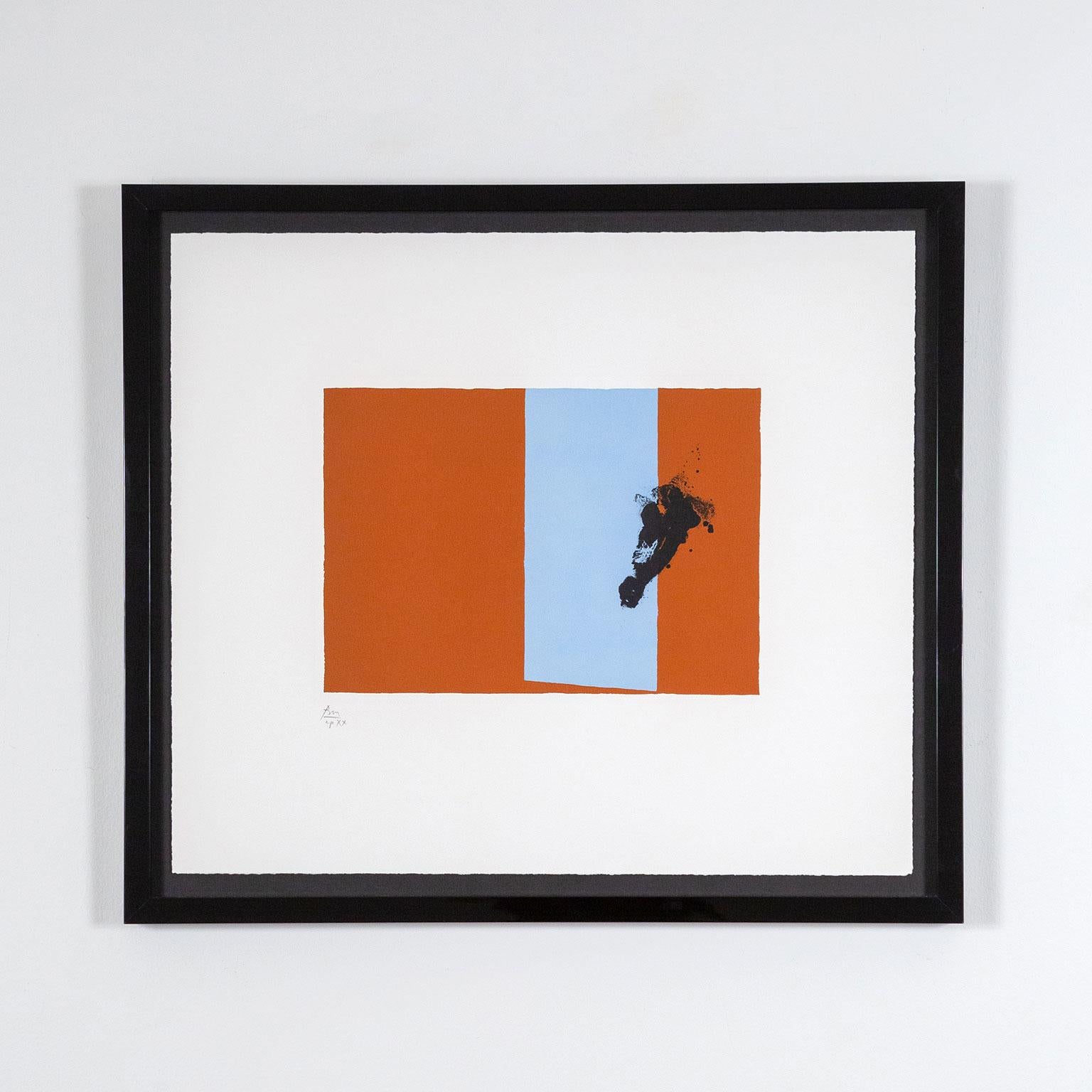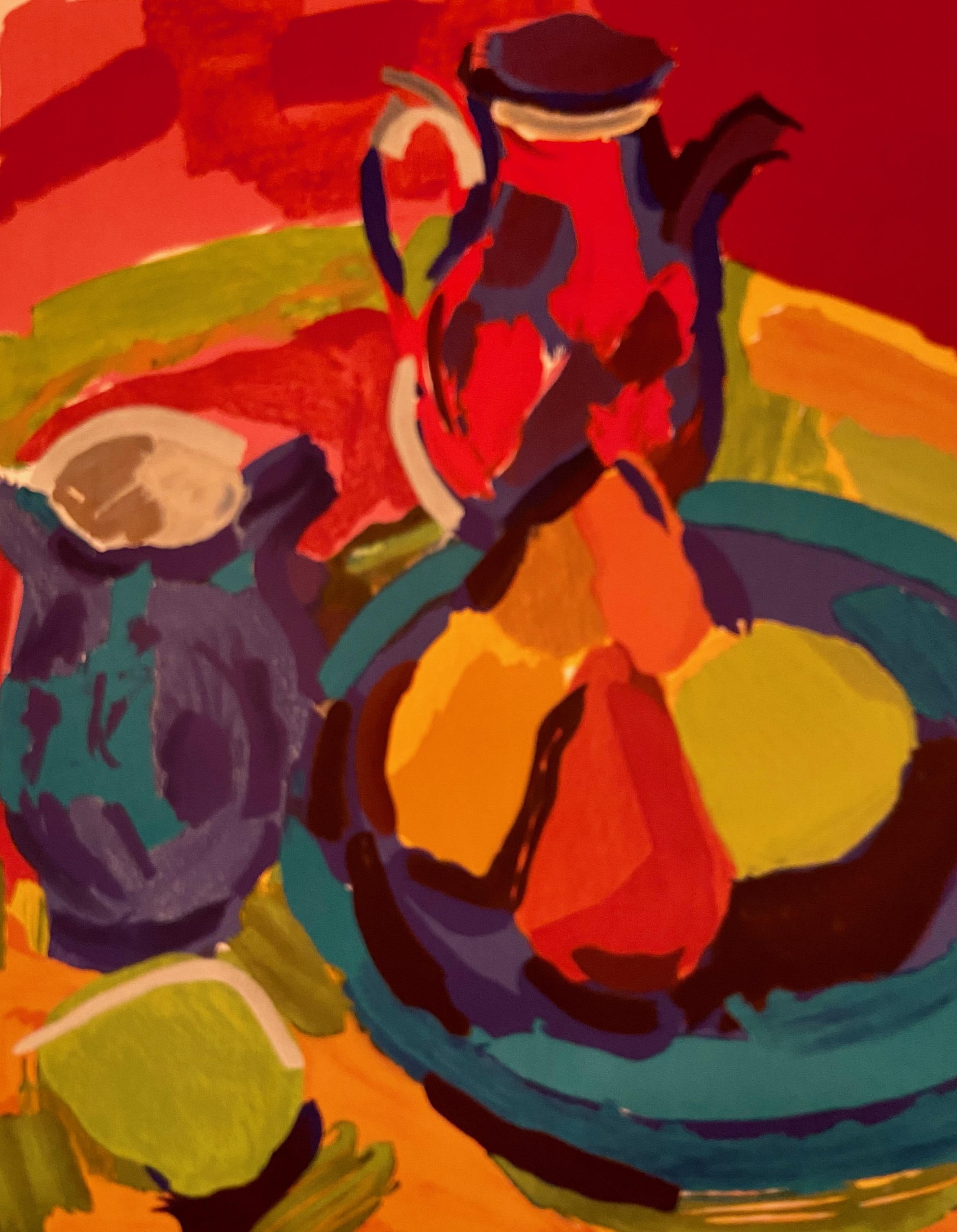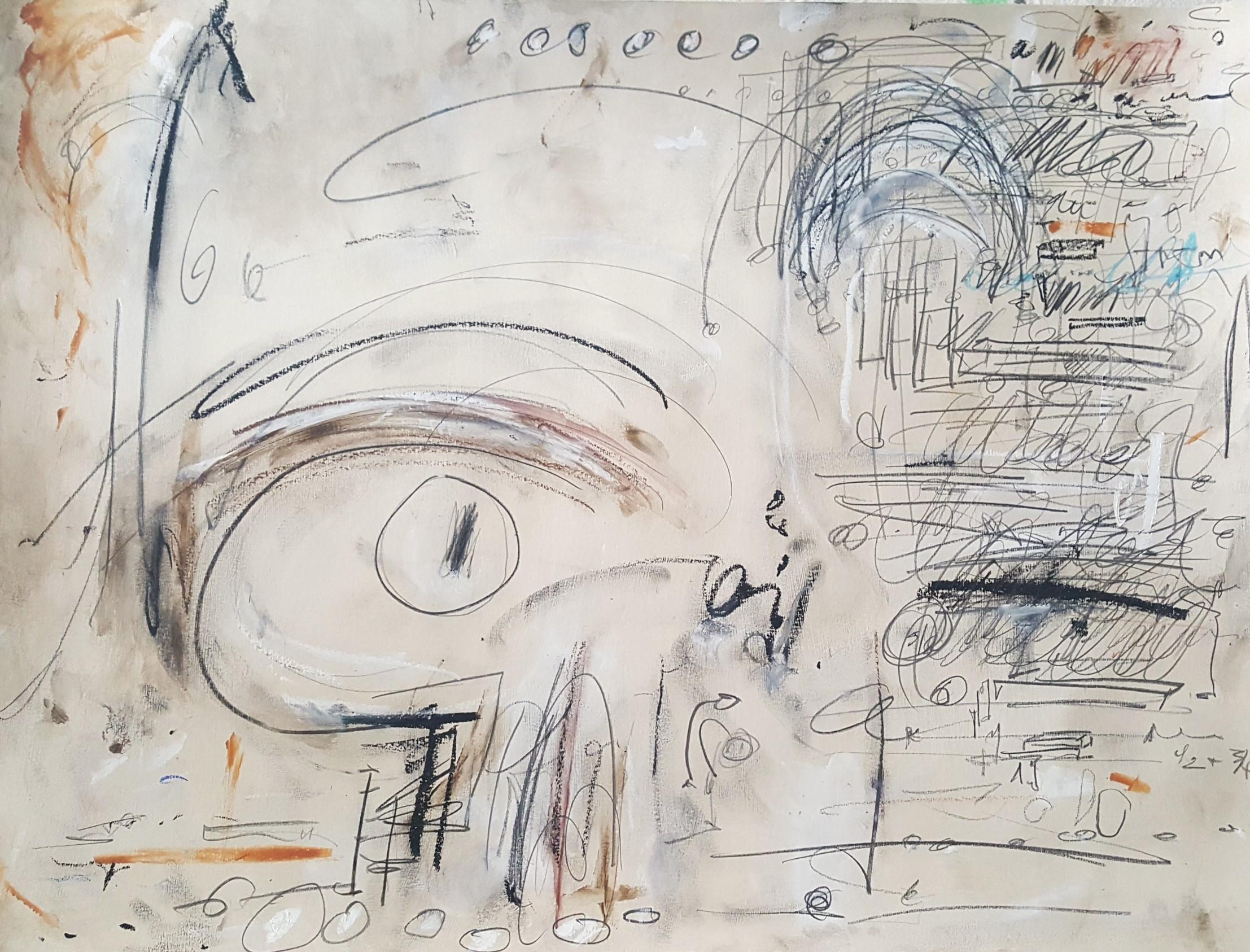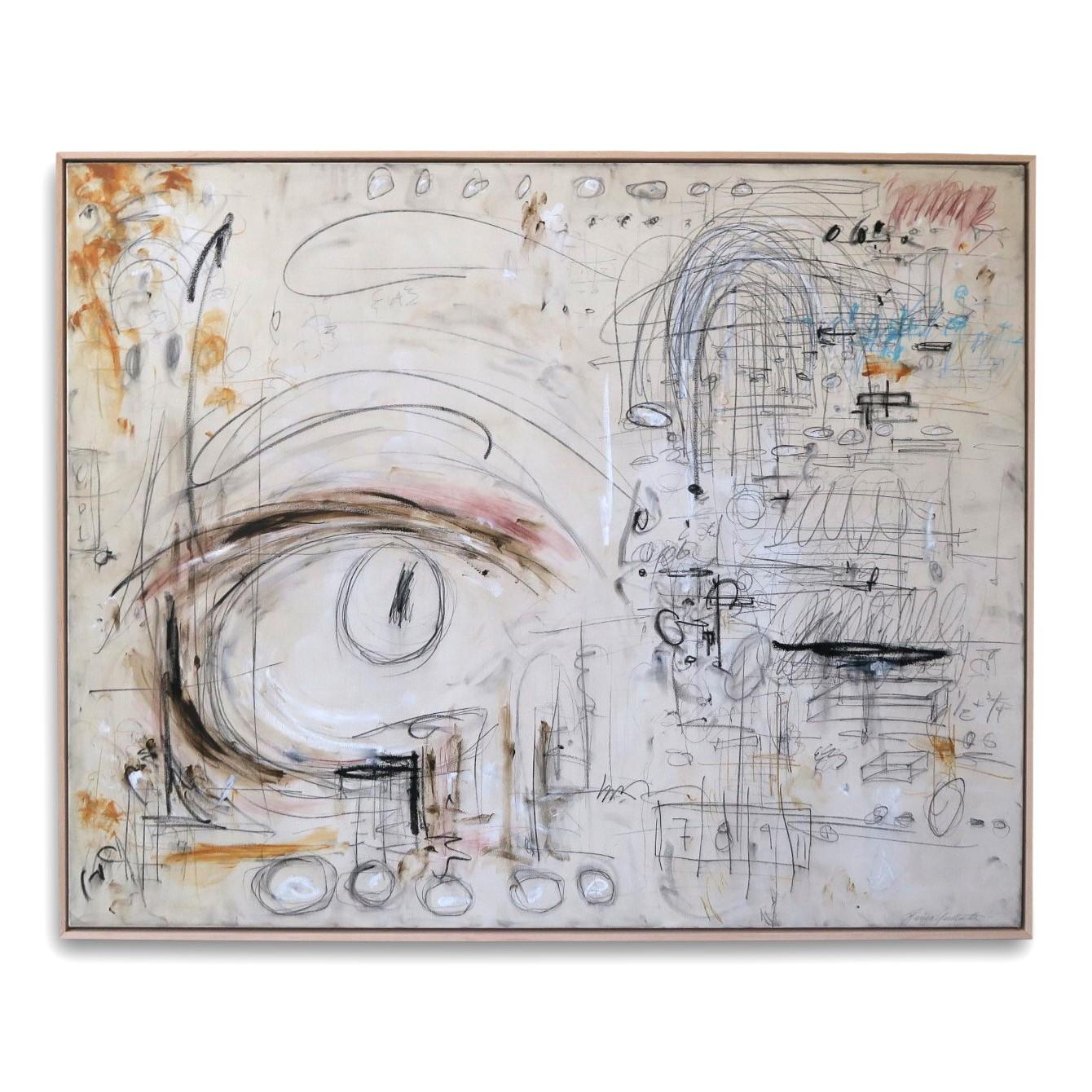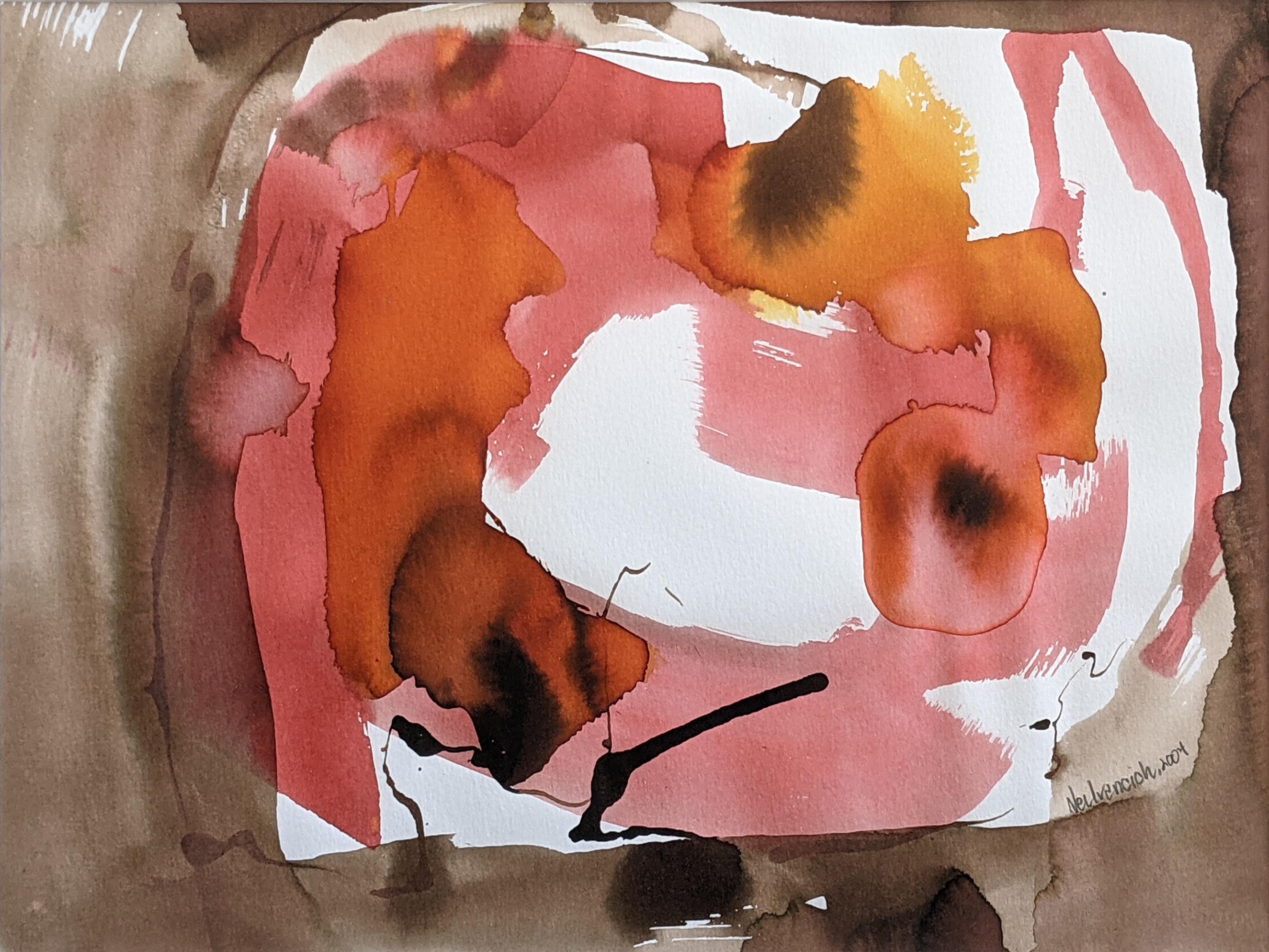Items Similar to The Mirror 3
Want more images or videos?
Request additional images or videos from the seller
1 of 5
Wolf HoffmannThe Mirror 31973
1973
About the Item
“I have been living in Berlin as a painter for 45 years and since then a lot of water has flowed down the Spree, many ‘big’ and little names, many art scenes, a lot of noise and lots of hope have come along.
There was the great period of 1920-1933, when Berlin was a real and free art city, when the public still visited the exhibitions and the painters had not yet invented the publicity. There was the ’12th Reich’, which eliminated art. And there came the laborious new beginnings after 1945.
When I was a beginner, around 1925, I plunged rather carelessly into the lively art scene: first exhibition in the then very turbulent jury-free show. In 1927, for the first time, I succeeded in conquering a wall space in the academy on Pariser Platz, where Liebermann led a strict regiment. Many young exhibitions were organized and critically acclaimed (Paul Westheim). Paul Cassirer showed three generations in two beautiful exhibitions, I was one of the youngest. My first collective exhibition was in the Galerie Möller in 1928, after which I received a master studio in the ‘Akademie der Künste’ for three years. In the printing workshop on the Steinplatz I learned the etchings on the same press, on which I still create the plates at our university today. This was followed by further exhibitions, again at Möller in 1931, etchings in the gallery Gurlitt in 1932, in the Szczecin Museum, whose director Riezler acquired several pictures that were destroyed during the Nazi era. The Kronprinzenpalais had also bought a picture and the Kupferstichkabinett some etchings. Everything went ahead, and then, with one hit, it was over. In 1934, all free, progressive exhibitions were closed and the associations liquidated (Künstlerbund, Sezession). The end of painting. I learned ceramics and painted tiles and tiled stoves; The war also ended this escape, since I had to be a soldier for four years.
After the battle for Berlin, I crawled out of the rubble and saw the studio house in the Kurfürstenstraße along with the pictures, plates and everything burned down.
The life went on. The first art exhibition that Berlin organized in 1945 was a sign of recollection. The gallery Schüler, at that time in a Zehlendorfer garden villa, showed 1948 my first post-war pictures. 1949 Foundation of the ‘Neue Gruppe’. I started to etch again. Since 1950 I have been the head of the restored workshop for etching at the University of Fine Arts in Berlin and since 1951 a class for free graphics. Later, as a supplement, I introduced screen printing.
Since then it continues; Berlin has changed, different is also the art. Works are being produced in bigger numbers than ever, optimistic and alive. ”
Wolf Hoffmann
in: Gallery Gerda Bassenge, Wolf Hoffmann. Ölbilder, Farbradierungen, Aquarelle 1962/63, exh. Cat., Berlin 1964.
- Creator:Wolf Hoffmann (1898 - 1979)
- Creation Year:1973
- Dimensions:Height: 13.63 in (34.6 cm)Width: 10.91 in (27.7 cm)
- Medium:
- Movement & Style:
- Period:
- Condition:
- Gallery Location:Wien, AT
- Reference Number:1stDibs: LU1782210573452
About the Seller
No Reviews Yet
Vetted Seller
These experienced sellers undergo a comprehensive evaluation by our team of in-house experts.
Established in 1973
1stDibs seller since 2022
5 sales on 1stDibs
- ShippingRetrieving quote...Ships From: Wien, Austria
- Return PolicyA return for this item may be initiated within 7 days of delivery.
More From This SellerView All
- N°4 Star ScriptLocated in Wien, 9“I have been living in Berlin as a painter for 45 years and since then a lot of water has flowed down the Spree, many ‘big’ and little names, many art scenes, a lot of noise and lots of hope have come along. There was the great period of 1920-1933, when Berlin was a real and free art city, when the public still visited the exhibitions and the painters had not yet invented the publicity. There was the ’12th Reich’, which eliminated art. And there came the laborious new beginnings after 1945. When I was a beginner, around 1925, I plunged rather carelessly into the lively art scene: first exhibition in the then very turbulent jury-free show. In 1927, for the first time, I succeeded in conquering a wall space in the academy on Pariser Platz, where Liebermann led a strict regiment. Many young exhibitions were organized and critically acclaimed (Paul Westheim). Paul Cassirer showed three generations in two beautiful exhibitions, I was one of the youngest. My first collective exhibition was in the Galerie Möller in 1928, after which I received a master studio in the ‘Akademie der Künste’ for three years. In the printing workshop on the Steinplatz I learned the etchings on the same press, on which I still create the plates at our university today. This was followed by further exhibitions, again at Möller in 1931, etchings in the gallery Gurlitt in 1932, in the Szczecin Museum, whose director Riezler acquired several pictures that were destroyed during the Nazi era. The Kronprinzenpalais had also bought a picture and the Kupferstichkabinett some etchings. Everything went ahead, and then, with one hit, it was over. In 1934, all free, progressive exhibitions were closed and the associations liquidated (Künstlerbund, Sezession). The end of painting. I learned ceramics and painted tiles and tiled stoves; The war...Category
1960s Abstract Expressionist Abstract Drawings and Watercolors
MaterialsEtching, Lithograph
- Ornamental CompositionLocated in Wien, 9“I have been living in Berlin as a painter for 45 years and since then a lot of water has flowed down the Spree, many ‘big’ and little names, many art scenes, a lot of noise and lots of hope have come along. There was the great period of 1920-1933, when Berlin was a real and free art city, when the public still visited the exhibitions and the painters had not yet invented the publicity. There was the ’12th Reich’, which eliminated art. And there came the laborious new beginnings after 1945. When I was a beginner, around 1925, I plunged rather carelessly into the lively art scene: first exhibition in the then very turbulent jury-free show. In 1927, for the first time, I succeeded in conquering a wall space in the academy on Pariser Platz, where Liebermann led a strict regiment. Many young exhibitions were organized and critically acclaimed (Paul Westheim). Paul Cassirer showed three generations in two beautiful exhibitions, I was one of the youngest. My first collective exhibition was in the Galerie Möller in 1928, after which I received a master studio in the ‘Akademie der Künste’ for three years. In the printing workshop on the Steinplatz I learned the etchings on the same press, on which I still create the plates at our university today. This was followed by further exhibitions, again at Möller in 1931, etchings in the gallery Gurlitt in 1932, in the Szczecin Museum, whose director Riezler acquired several pictures that were destroyed during the Nazi era. The Kronprinzenpalais had also bought a picture and the Kupferstichkabinett some etchings. Everything went ahead, and then, with one hit, it was over. In 1934, all free, progressive exhibitions were closed and the associations liquidated (Künstlerbund, Sezession). The end of painting. I learned ceramics and painted tiles and tiled stoves; The war...Category
20th Century Abstract Expressionist Abstract Drawings and Watercolors
MaterialsEtching, Aquatint
- NeedBy Hans StaudacherLocated in Wien, 9The artist has worked with various materials, but many of his works were created on paper. Although he began painting abstractly at an early age, Staudacher's roots lie in the figura...Category
20th Century Contemporary Abstract Drawings and Watercolors
MaterialsInk, Watercolor
- Composition 04By Hans StaudacherLocated in Wien, 9The artist has worked with various materials, but many of his works were created on paper. Although he began painting abstractly at an early age, Staudacher’s roots lie in the figura...Category
20th Century Contemporary Abstract Drawings and Watercolors
MaterialsInk, Watercolor, Pencil
- Chief accountingBy Hans StaudacherLocated in Wien, 9The artist has worked with various materials, but many of his works were created on paper. Although he began painting abstractly at an early age, Staudacher's roots lie in the figura...Category
20th Century Contemporary Abstract Drawings and Watercolors
MaterialsInk, Watercolor
- DaedalusBy Markus LüpertzLocated in Wien, 9Markus Lüpertz was born in Reichenberg in 1941 and works as a German painter, graphic artist and sculptor. He lives and works in Berlin, Karlsruhe, Düsseldorf and Florence and has hi...Category
21st Century and Contemporary Contemporary Abstract Drawings and Waterco...
MaterialsPaper, Mixed Media, Watercolor
You May Also Like
- Paris Suite (Autumn)By Robert MotherwellLocated in Toronto, OntarioRobert Motherwell (1915-1991) is one of the essential American abstract painters that radically defined post-war abstraction in New York City. Today, his work appears in museum collections around the world and is instantly recognizable for its boldness and black forms. His auction record was set in 2018 at $12.6 million USD. In addition to his impressive paintings, Motherwell is also revered as one of the most innovative and prolific printmakers of the 20th century. He was always searching for new techniques, whether at his own printmaking atelier, or collaborating with others, to expand his ideas and express his aesthetic. Created in 1980, "Paris Suite...Category
1980s Abstract Expressionist Abstract Drawings and Watercolors
MaterialsLithograph
- Nature MorteBy (circle of) Pierre AmbrogianiLocated in Belgrade, MTThis colorful lithograph is part of my private collection. It is a limited edition , 1 print available, signed and numbered 25/150. It is in very good condition.Category
Mid-20th Century Abstract Expressionist Abstract Prints
MaterialsLithograph
- "Eye of the Beholder" Acrylics, Pencils, Oil Pastels in Neutral Hues of TaupeBy Karina GentinettaLocated in New York, NY"Eye of the Beholder" 2024, 48"x60" horizontal abstract painting by Argentine-born artist Karina Gentinetta (featured in Elle Decor, Architectural Digest, the New York Times, Traditi...Category
21st Century and Contemporary Abstract Expressionist Abstract Drawings a...
MaterialsOil Pastel, Acrylic, Carbon Pencil, Color Pencil
- "Untitled" Acrylics, Pencils, Oil Pastels on Paper in Neutral Hues of TaupeBy Karina GentinettaLocated in New York, NY"Untitled" 2019, 25" x 31" horizontal drawing on paper by Argentine-born artist Karina Gentinetta (featured in Elle Decor, the New York Times, Tradi...Category
21st Century and Contemporary Abstract Expressionist Abstract Drawings a...
MaterialsGlaze, Oil Pastel, Acrylic, Carbon Pencil
- GambolLocated in Salt Lake City, UTGambol, watercolor on paper, 9 x 12 inches (Framed size: 16 x 18.5 inches), $650 Nel Ivancich (1941-2014) was a student of one of Utah’s pioneers of abstract expressionism, Don Olsen in high school. She later earned her bachelor’s and master’s degrees in fine arts at the University of Utah, where she then taught for a number of years; her contemporaries included artists Lee Deffebach...Category
Early 2000s Abstract Expressionist Abstract Drawings and Watercolors
MaterialsWatercolor
- in situBy Carolyn CoalsonLocated in Salt Lake City, UT(Framed size: 17.5 x 17.5 inches)Category
2010s Abstract Expressionist Abstract Paintings
MaterialsWatercolor
Recently Viewed
View AllMore Ways To Browse
The Mirror Used
The Real Real Vintage
The Great Went
3 Cats
The Great Escape
Paul Berlin
Vintage Unframed Mirror
Big Vintage Mirror
Vintage Studio Tile
Vintage Garden Mirrors
Vintage Garden Mirror
Vintage Wolf Art
Cat Mirror
Etched Pictures
Vintage Cat Head
Lithograph By Mirror
Painting By Numbers Vintage
1970 Art Tile
